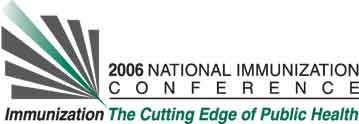Jonathan L. Temte1, Herbert F. Young
2, and Bellinda K. Schoof
2. (1) Family Medicine, University of Wisconsin, 777 South Mills Street, Madison, WI, USA, (2) American Academy of Family Physicians, 11400 Tomahawk Creek Parkway, Leawood, KS, USA
Learning Objectives for this Presentation:
By the end of the presentation participants will be able understand the sensitivities and sensibilities of family physicians regarding immunization issues.
Background:
The American Academy of Family Physicians (AAFP)—with 93,000 members—is the largest single specialty physician organization. Because our spectrum of care spans from the prenatal period into old age, FPs provide immunizations of every type to recipients in every category of eligibility.
Objectives:
Through a CDC cooperative agreement, the AAFP conducted two annual surveys to better define current vaccine issues.
Methods:
Surveys—which contained 22 and 27 items respectively—were mailed to randomly selected samples of clinically-active AAFP members in 2004 (n=2192) and 2005 (n=4720). The surveys were designed to assess spectrum of care, current provision of vaccines, and clinical approaches to immunizations. Non-responders received up to two additional mailings. Summary statistics were evaluated. Approaches were compared between years and among demographic groups using chi square and ANOVA as appropriate.
Results:
Modest rates of return were achieved (2004: n=1019, 46.5%; preliminary rate for 2005: n=1352, 28.6%). FPs provided care to all age groups, routinely providing childhood and adolescent vaccines in rates spanning from 38.8% for MSPV4 to 93.1% for Td. Routine adult immunizations had rates from 19.4% for rubella to 95.2% for influenza. Most FPs were immunized against influenza (87.8% for 2003/04; 86.3% in 2004/05) as were their medical staffs (95.8%, 95.3%). A majority (65.7%) would support a recommendation for universal influenza immunization if vaccine supply could be assured and adequate. The AAFP (79.7%) and CDC (78.8%) were the primary sources of vaccine information for FPs, with the journal American Family Physician being the single most used resource (81.4%).
Conclusions:
FPs are actively engaged in the distribution of vaccines to patients and are sources of education. There appears to be a high level of compliance with ACIP recommendations in the provision of immunizations.
See more of Posters
See more of The 40th National Immunization Conference (NIC)

